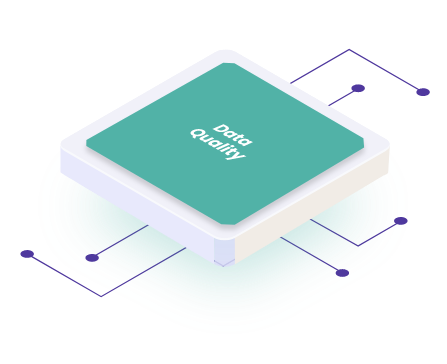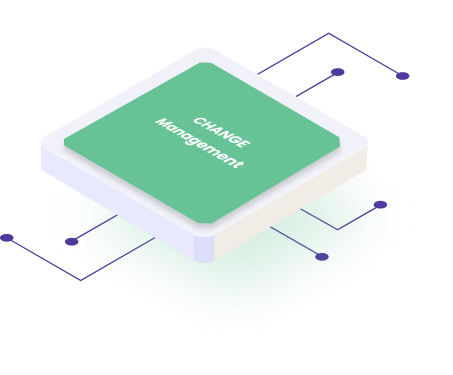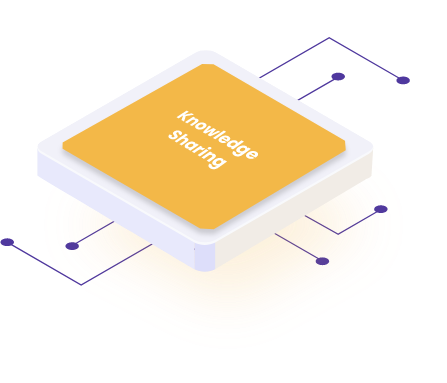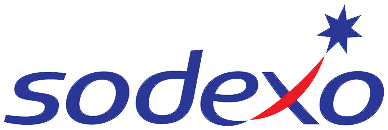Switching to a new CMMS software?
Hear us out before you take the plunge.
Lately, there’s a lot going around legacy CMMS being inadequate and holding back your ability to take on the future of asset operations and maintenance. If you’re still using one, you may have come across all this pressure to upgrade to a new, modern CMMS software. But is it really worth it?
We’re here to help you make the right decision
Switching from legacy CMMS to new-age CMMS software almost never justifies the increased cost, training, and implementation challenges. So before you make the move, here’s what you need to know to help you make the right decision.
There’s nothing wrong with legacy CMMS!
Don’t blame your CMMS software for things outside its control. Understand its place and purpose in your technology stack and why changing it may not be the right answer to your problems.
Five crucial things to consider before you make the move
When you upgrade to a new CMMS, both opportunities and challenges arise. If you can think these through, you'll be in a much better position to decide whether you need to change your CMMS - or your strategy and culture around it.
What do you want to achieve from the switch or upgrade?
The most important consideration is what you want to achieve from your O&M technology stack with a new CMMS software in your arsenal. The evaluation should take into account the primary upgrade objectives for your organization.
- What will be gained from the new system or latest release?
- What specific functionality will enhance work processes?
- What is the impact on IT and digital transformation?
- What technology opportunities does it represent?


Is the new system/version interface easy to use?
Ease of use is a frequently stated concern of CMMS software buyers. Numerous studies have found that an intuitive user interface is among the top factors when comparing CMMS packages.
- For a CMMS to succeed, it must be adopted by those who will use it most often.
- A system that is difficult to learn and navigate won’t be used and will never produce positive results.
- If CMMS training has taken place and you still find it difficult or confusing to use, it could be that the system isn’t user friendly.
Poor data quality could be compromising your whole effort.
We often see user-generated errors such as forgetting to input data, entering inconsistent data or not performing maintenance checks pointed out by the CMMS. These seemingly small user errors can snowball and lead to even bigger issues down the road, costing you both time and money.
- Keep in mind, a CMMS is not only about the software, but also the way users feed the system and use the information it provides.
- It boils down to how you make sure the consistency of data being entered is of the best possible quality.


How will your user base adapt to changes in the new system?
Closely linked to ease of use and data quality is the ability of people on the shop floor to incorporate changes brought on by the new software. Forcing CMMS often fails because the workforce is already comfortable with the software you’re using and may be resistant to change.
- If the CMMS causes any inconvenience or additional work for O&M teams, it will invite behavior and culture adjustments, which are usually tough to manage.
- The new system must adhere to your practices and procedures — not the other way around.
Have you thought about data access and knowledge sharing?
Knowledge sharing is a broad concept, but it also relies heavily on the UI/UX of the new CMMS software.
- How can data from your CMMS be distributed to all relevant teams on demand?
- Is it easy to integrate with various work processes?
Another aspect is determining how to go beyond scale inquiries. If you require a report, or something specific, you must contact the CMMS management team. The concern is more about the time vs the cost.

Your legacy CMMS + New Innovative Products = A rewarding partnership!
If you think your legacy CMMS is holding you back, switching to a new CMMS will not take you far. Think outside the box - rather, throw the box away - by combining legacy CMMS with proven new products and technologies.

Five-six digit cost savings
You can save thousands of dollars on data quality exercises required to clear and clean your data every 4 to 5 years, for which several data engineers, teams, and subject matter experts have to be involved. Eventually, it's a hefty expenditure that, more often than not, leads nowhere.

Productivity improvements
Achieve up to 50% increase in productivity by avoiding unnecessary changes to your current system. For this, you must consider how O&M teams interact with data throughout the asset life cycle. All of this will help in cost-reduction, and margins will improve as a result.

Automated QA/QC process
There are now advanced software solutions on the market that automate a process of filtering and organizing data before it goes into the CMMS to ensures that data quality is checked at the source and not after it’s already in the system.

Using tech you’ve always wanted to
The best part is that you can move beyond the limited scope of CMMS and use technology you have always wanted to, such as artificial intelligence (AI), machine learning (ML), and so on. And it’s only possible if you don’t empty your pockets on a ‘new and better’ CMMS.
Why CMMS technology and community are falling short on their promises
In most cases, organizations end up running a fancy work order ticket system and chasing meaningless KPIs.
The vendors business model is to sell software, which they do quite well. Unfortunately they are not all that interested in certifications for reliability and asset management systems. It seems that the CMMS vendors, community, and technology-based consultants focus solely on the software.
Basically, you don’t know what you don’t know. The CMMS community usually attends tech conferences as opposed to asset-centric conferences. Therein, many lack understanding of the principles behind an asset management system based on reliability and proactive decision-making. The endgame is to optimize return on asset (ROA), which means doing the right work at the right time by the right resource in a safe manner. System design should support reliability engineering and workforce efficiency. Having the right conversations and knowing what your O&M team needs will put you in the right position to recognize what your organization needs. Changing your CMMS won’t solve the problem but looking beyond it and bringing in a new solution to pair with your CMMS definitely will.
Progressive O&M teams have turned to a solution beyond CMMS







Leading organizations using legacy CMMS like Maximo, FSI, JD Edwards and Aramco are accelerating digital transformation, and achieving higher cost savings and efficiency gains from O&M initiatives by pairing our solutions with it.
Want to know more?
Let’s Talk